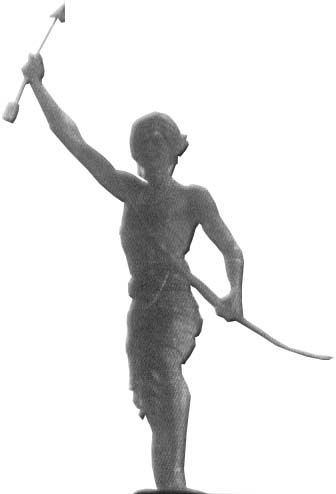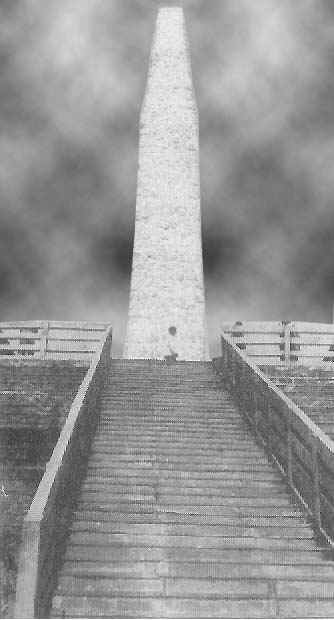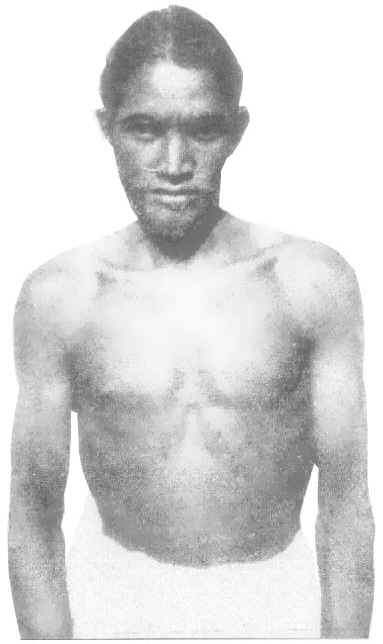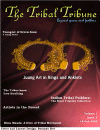Further, Birsa's involvement in people's struggle and his leadership earned him a permanent place in the hearts of the struggling tribal communities. He was looked upon as their saviour. As a young man Birsa was much ahead of his contemporaries in his vision and revitalised the Sardar movement that had started since 1830.
Leadership
Both the Sardar and Birsa movements had their origin in agrarian exploitation.The Sardars were loyal to the British and the King of Chotanagpur but wanted elimination of exploitative intermediary class. Some became violent in 1892 having no positive political aim and plan. Birsa’s aim was to get both political and religious freedom. Finding no way out, the Sardars joined Birsa movement to drive out the foreigner and establish Birsa Raj.
The Beginning of the Agitation
The government got the distorted picture of Birsa movement. It was alleged that Birsa was instigating the munda people to disobey government orders, and to refuse paying taxes to the government. Birsa followers declared that British rule has ended. The government sent police to arrest them but the Birsa followers could repulse the police and targeted the missionaries. The Birsa followers became cause of worry for the British Government who ordered Birsa’s arrest on charges of treason.
The Arrest and Release of Birsa
.The District Superintendent of Police executed the arrest warrant of Birsa along with nine of his followers. Birsa was arrested at Chalkad in August 1895 while he was asleep. The police arrested him without much opposition except the scuffle with Birsa. He along with his followers were given two years rigorous imprisonment. He spent most part of prison life in Hazaribagh jail but he was released from Ranchi jail on 30th Nov 1897. He was asked not to indulge in any anti government activities.
Preparation for the uprising
The Birsa followers were inspired by his release and soon increased their activities under the leadership of Birsa. The Birsaites were divided into two groups one to organise revolt and another to deat with religious awareness. The religious group taught the people about the golden age of their ancestors, revival of their lost faith, right on property and about their condition due to exploitation by the Rajas, Zamindars etc. Underground preparation for greater revolt was going on and Birsa infused enthusiasm. He made them understand that under new system of governance, which the followers called "Birsa Raj" , the land and forest would belong to the peasants and therewould be a new religious faith combining traditional beliefs. Birsa made extensive tour of the area and held secret meetings with the Birsaites.
The insurrection of 1899-1900
The insurrection of 1899-1900 spread with the ideas that the Mundas were the real owners of the land, they had to establish Birsa Raj and Birsa religion . On the eve of Christmas, the Birsaites as per their plan started attacking the Christians and Churches of Chakradharpur, Khunti, Torpa, Tamar and Basia. All these incidents created panic among the European people.
Fight with the Government
On 5th January 1900, seven police men were sent to Etkdih to arrest Gaya Munda, a Birsaite Sardar. These police men were killed. The next day a large police contingent led the Deputy Commissioner arrested Gaya Munda after a pitched battle where the wife of Gaya Munda fought bravely. This was a unique incident. The Birsa troop attacked Khunti police station with bows, arrows and axes, burnt it down, but did not loot money. This incident created panic among the police. The administration cracked down on the Birsaites, captured and tortured them. During this period of intensified police attack, Birsa Munda always changed his place of stay and inspired his fellow men. He wanted to show his charisma of his divine ability, but many were not enthused.
From 13th to 26th January 1900, the Commissioner ordered for search operations by which many Birsaites were arrested or compelled to surrender. They were offered rent free land and cash reward to provide information on Birsa and Birsites. Out of poverty and threat, many became informers to British administration. On 28th January, 1900, Donka and Manjhia Munda, the two frontline leaders and 32 other Birsaites were forced to surrender. On 3rd February 1900, the police informers found out Birsa in dense forest and captured him while he was asleep. He was brought to Ranchi hastily apprehending mob resistance. There was huge crowd on the way to salute their leader.
The End of a Dedicated Life
Birsa was kept in jail along with many of his followers. On 20th May 1900, he was taken to the court along with his comrades but he fell ill on the way and was taken back to the jail. He was diagnosed to be suffering from cholera. His condition deteriorated. On June 9, 1900, he died in the jail. Birsa Munda's death is shrouded in mystery. Some suspect food poisoning could be the cause but the British authorities claimed cholera as cause of his death.
In the trial of the Birsaites , Gaya Munda, his son and Sukhram were given capital punishment. Donka Munda , Manjhia Munda and 34 other Birsaites were sentenced for transportation. Other Birsaites were given some years of rigorous imprisonment. Thus, the life of a great person along with the movement came to an end. But Indian Freedom Movement drew inspiration from it in the later days.
Existence of Birsaism in present day
Although the life of Birsa Munda ended fighting for the cause of his deprived fellow people, his religious philosophy known as "Birsaism" perpetuated in that region. Now followers of Birsaism form a strong community and are found in many villages in Porhat area of Jharkhand. They consider themselves as belonging to a distinct religion. The unique aspect of this religion is that it prohibits drinks, eating meat, teaches personal hygiene through ritual bath and purification of heart and soul.







